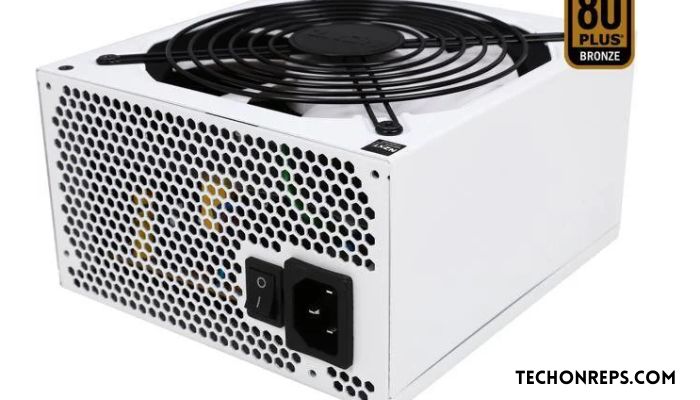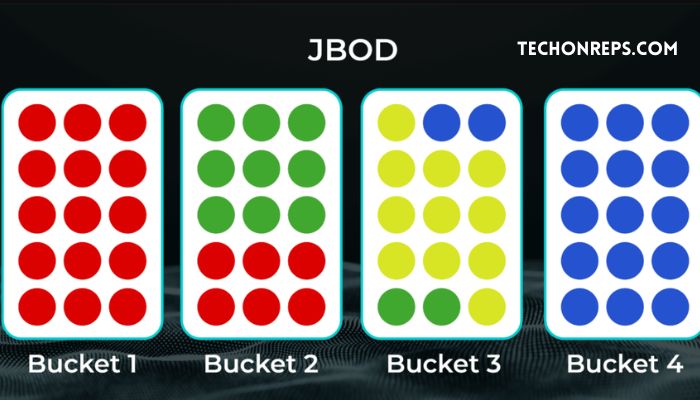Understanding How Much Power a Jbod Use At Idle
JBOD, or Just a Bunch of Disks, is a storage architecture that allows multiple hard drives to be combined into a single logical unit. It is a popular choice for data storage in various industries due to its simplicity and cost-effectiveness. However, JBOD also comes with its own set of challenges, particularly in terms of power consumption. In this article, we will explore the impact of JBOD on energy bills, the environmental consequences of wasted energy, the hidden cost of JBOD power usage, and strategies for reducing idle JBOD power consumption.

Understanding JBOD and Its Power Consumption
JBOD is a storage architecture that allows multiple hard drives to be combined into a single logical unit. Unlike RAID (Redundant Array of Independent Disks), which provides data redundancy and fault tolerance, JBOD simply combines the capacity of multiple drives into one large volume. This makes it an attractive option for organizations that need large amounts of storage space without the added complexity and cost of RAID.
In terms of power consumption, JBOD operates by keeping all the drives powered on at all times. This means that even when the drives are not actively being used, they are still consuming power. The power consumption of JBOD can vary depending on the number and type of drives used, as well as other factors such as temperature and workload.
The Impact of Idle JBOD on Energy Bills
Idle JBOD refers to the state in which the drives are powered on but not actively being used. This can occur during periods of low activity or when the system is not in use. While idle JBOD may seem harmless, it can have a significant impact on energy bills.
When drives are idle, they still consume power to maintain their spinning disks and keep them ready for use. This constant power consumption adds up over time and can result in wasted energy and higher energy bills. In fact, studies have shown that idle JBOD can account for a significant portion of a data center’s energy consumption.
Real-life examples of wasted energy due to idle JBOD can be seen in large-scale data centers. These facilities house thousands of drives, and even a small percentage of idle drives can result in a substantial amount of wasted energy. This not only has financial implications but also contributes to the overall carbon footprint of the data center.
The Environmental Consequences of Wasted JBOD Energy
The carbon footprint of wasted energy from idle JBOD is a significant concern for the environment. The power consumed by idle drives contributes to greenhouse gas emissions, which are a major contributor to climate change. In addition, the energy used to power these drives comes from non-renewable sources such as coal and natural gas, further exacerbating the environmental impact.
The impact on the environment goes beyond just carbon emissions. The extraction and production of the materials used in hard drives also have environmental consequences, including habitat destruction and pollution. By reducing idle JBOD power consumption, organizations can help mitigate these environmental impacts and contribute to a more sustainable future.
Sustainable data storage is becoming increasingly important as organizations strive to reduce their carbon footprint and operate in an environmentally responsible manner. By optimizing JBOD energy efficiency, organizations can not only reduce their environmental impact but also save on energy costs.
JBOD Power Usage: A Hidden Cost of Data Storage
While the cost of purchasing and maintaining JBOD systems is often considered when evaluating data storage solutions, the power usage of JBOD is often overlooked. This hidden cost can have a significant impact on the bottom line.
The power consumption of JBOD can vary depending on factors such as the number and type of drives used, as well as temperature and workload. However, studies have shown that idle JBOD power consumption can account for a significant portion of a data center’s energy consumption.
For organizations with large-scale data storage needs, the cost of powering idle drives can add up quickly. This can result in higher energy bills and reduced profitability. By considering the power usage of JBOD when evaluating data storage solutions, organizations can make more informed decisions and potentially save on energy costs.
The Role of JBOD in Modern Data Centers
JBOD plays a crucial role in modern data centers, where large amounts of data need to be stored and accessed quickly. However, the increasing demand for data storage has also highlighted the need for energy-efficient solutions.
As data centers continue to grow in size and complexity, the power consumption of JBOD becomes an even more significant concern. The constant power consumption of idle drives can result in wasted energy and higher energy bills. In addition, the heat generated by these drives can contribute to increased cooling requirements, further adding to the energy consumption of the data center.
To address these challenges, organizations are increasingly looking for energy-efficient data storage solutions. These solutions not only help reduce energy consumption and lower costs but also contribute to a more sustainable future.
Measuring Idle JBOD Power Consumption: Methods and Tools
Accurately measuring idle JBOD power consumption is essential for understanding its impact and identifying opportunities for improvement. There are several tools and methods available for measuring JBOD power consumption.
One common tool used for measuring power consumption is a power meter or wattmeter. This device measures the electrical current flowing through a circuit and calculates the power consumption based on voltage and current readings. Power meters can be used to measure the power consumption of individual drives or an entire JBOD system.
Another method for measuring idle JBOD power consumption is through software-based monitoring tools. These tools collect data from the drives and provide real-time information on power usage. By analyzing this data, organizations can identify trends and patterns that can help optimize energy efficiency.
Accurate measurements are crucial for understanding the true impact of idle JBOD on energy consumption. By using the right tools and methods, organizations can gain valuable insights into their power usage and make informed decisions to reduce energy consumption.
The Factors That Affect JBOD Power Usage
Several factors can affect JBOD power usage, including temperature, workload, and hardware. Temperature plays a significant role in the power consumption of JBOD. Higher temperatures can increase the power consumption of drives as they work harder to maintain optimal performance. By optimizing cooling systems and maintaining appropriate temperature levels, organizations can reduce the power consumption of JBOD.
Workload also affects JBOD power usage. Drives that are under heavy load consume more power than those with lighter workloads. By optimizing workload distribution and implementing efficient data management strategies, organizations can reduce the overall power consumption of JBOD.
Hardware choices can also impact JBOD power usage. Newer drives often have lower power consumption compared to older models. By upgrading to more energy-efficient drives, organizations can reduce the power consumption of their JBOD systems.
Strategies for Reducing Idle JBOD Power Consumption
Reducing idle JBOD power consumption requires a combination of best practices, power management techniques, and software optimization. One best practice for reducing idle JBOD power consumption is to implement a tiered storage strategy. This involves categorizing data based on its importance and access frequency and storing it on different types of drives accordingly. By moving less frequently accessed data to slower, lower-power drives, organizations can reduce the overall power consumption of their JBOD systems.
Power management techniques such as drive spin-down can also help reduce idle JBOD power consumption. This involves automatically powering down drives when they are not in use for a certain period. By implementing intelligent power management policies, organizations can significantly reduce the power consumption of their JBOD systems.
Software optimization is another effective strategy for reducing idle JBOD power consumption. By implementing efficient data management strategies and optimizing data placement algorithms, organizations can minimize the number of idle drives and reduce overall power consumption.
The Benefits of Optimizing JBOD Energy Efficiency
Optimizing JBOD energy efficiency offers several benefits, including financial savings, environmental benefits, and improved data center operations. From a financial perspective, optimizing JBOD energy efficiency can result in significant cost savings. By reducing idle JBOD power consumption, organizations can lower their energy bills and improve their bottom line. These cost savings can be reinvested in other areas of the business or used to fund sustainability initiatives.
In addition to financial benefits, optimizing JBOD energy efficiency also has environmental benefits. By reducing the carbon footprint of data storage, organizations can contribute to a more sustainable future. This is particularly important as the demand for data storage continues to grow and the environmental impact of data centers becomes a major concern.
Finally, optimizing JBOD energy efficiency can improve data center operations. By reducing power consumption, organizations can lower cooling requirements and improve overall energy efficiency. This can result in improved performance, reduced downtime, and increased reliability.
The Future of JBOD and Sustainable Data Storage
The future of JBOD technology lies in its integration with sustainable data storage solutions. As organizations strive to reduce their carbon footprint and operate in an environmentally responsible manner, the need for energy-efficient data storage solutions becomes increasingly important.
JBOD will continue to play a crucial role in modern data centers due to its simplicity and cost-effectiveness. However, there is a growing demand for more sustainable alternatives that offer both high performance and low power consumption.
The role of JBOD in sustainable data storage lies in its optimization. By implementing best practices, power management techniques, and software optimization strategies, organizations can significantly reduce the power consumption of their JBOD systems and contribute to a more sustainable future.
Conclusion:
JBOD is a popular choice for data storage due to its simplicity and cost-effectiveness. However, it also comes with its own set of challenges, particularly in terms of power consumption. Idle JBOD can result in wasted energy, higher energy bills, and environmental consequences.
By accurately measuring idle JBOD power consumption, understanding the factors that affect power usage, and implementing strategies for reducing idle power consumption, organizations can optimize JBOD energy efficiency and reap the benefits of financial savings, environmental benefits, and improved data center operations.
The future of JBOD lies in its integration with sustainable data storage solutions. As organizations strive to reduce their carbon footprint and operate in an environmentally responsible manner, the need for energy-efficient data storage solutions becomes increasingly important. By optimizing JBOD energy efficiency and embracing sustainable data storage practices, organizations can contribute to a more sustainable future.



